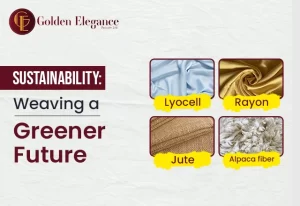- Online Shopping Coming Soon
The weaving machine manufacturing sector, one of the most ancient and indispensable pillars of human civilization, has experienced a remarkable evolution in recent times.
This evolution has been propelled by technological advancements, the increasing emphasis on sustainability, and the continuously shifting market forces.
When we look ahead at the future of weaving machine manufacturers, we can envisage an intriguing voyage characterised by automation, sustainability, and the dynamic evolution of market trends.
Automation is set to be the driving force behind the weaving industry’s future. Weaving machines have come a long way from the traditional handloom to modern computerised looms. The integration of artificial intelligence and robotics is making weaving machines smarter and more efficient than ever before. These machines can automatically adjust settings, detect defects, and minimise material waste, thereby boosting productivity and reducing labour costs.
Additionally, the use of automation in weaving machines ensures consistent and high-quality fabric production. As we move forward, we can expect even greater levels of automation, leading to increased output and faster turnaround times in the textile industry.
Sustainability is a key concern in today’s textile industry, and weaving machines are no exception. The future of weaving machines will undoubtedly prioritise eco-friendly practices. Innovations in materials and processes will reduce water and energy consumption, making textile production more sustainable.
One exciting trend is the development of sustainable fibres and textiles. Weaving machines will adapt to process these materials efficiently, supporting a shift towards circular fashion and reducing the environmental impact of the industry. Moreover, recycling and upcycling textiles will become more integrated into the weaving process, further minimising waste.

Market dynamics play a pivotal role in shaping the future of weaving machines. Consumers are becoming increasingly conscious of the products they buy, demanding more personalised, unique, and sustainable textiles. As a result, weaving machines will need to be versatile, accommodating various fabric types, patterns, and designs.
Customization will be a prominent trend, with weaving machines capable of producing small batches of customised fabrics on-demand. This will reduce overproduction and excess inventory while satisfying consumer preferences for individuality.
Another aspect of market dynamics is the global nature of the textile industry. Weaving machines will need to be adaptable to different markets and regulations, ensuring compliance with international standards for quality and sustainability.
The future of weaving machine manufacturers is poised for a remarkable transformation. Automation will drive efficiency and productivity, making textile production faster and more cost-effective. Sustainability will take centre stage, with eco-friendly practices and materials becoming the norm. Meanwhile, weaving machines will adapt to shifting market dynamics, catering to consumer demands for customization and meeting global standards.
Copyright © Golden Elegance. All Rights Reserved. Website Development & Digital Partner – BUSFAM